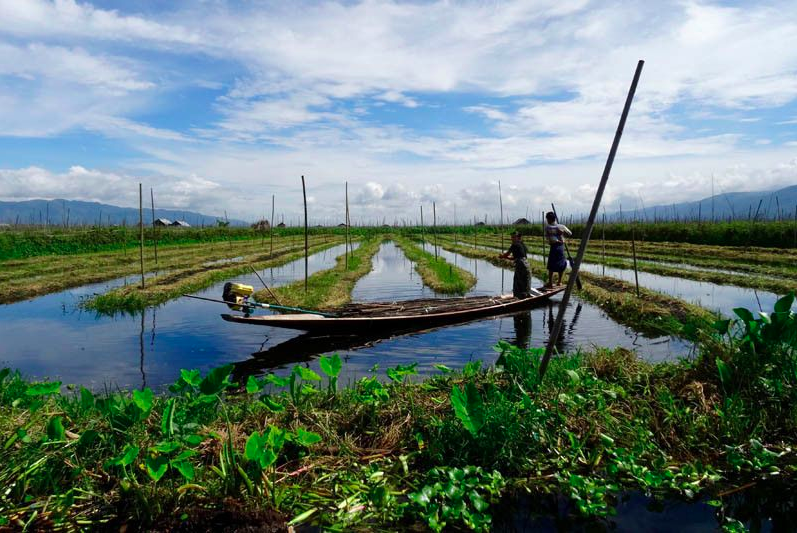Myanmar is a country in south-east Asia, bordered by China to the north and north-east, by Laos and Thailand to the east and south-east, the Bay of Bengal and the Andaman Sea to the south, and by India and Bangladesh to the west.
Population estimate (2019): 54,135,723
Capital City: Naypyidaw
Currency used: MMK (Kyat)
Gross National Income per capita (2013) (PPP international $): 5
Time zone: GMT + 6:30
Population growth rate (2019): 0.89%
Total fertility rate per woman: 2.17
Languages: Burmese is the official language, and several other languages are spoken by ethnic minorities.
Key ethnic groups: Myanmar has 135 officially recognised ethnic groups; some of the largest groups are the Bamar (68%), Shan (10%), Kayin (7%), Rakhine (4%), overseas Chinese (3%).
Religion: 87.9% Buddhist, 6,2% Christian, 4.3% Muslim, 0.8% Animist, 0.5% Hindu.
Literacy: 89.5%
Climate: Myanmar has a tropical monsoon climate with three seasons; a rainy season from mid-May to October, a cool and dry season from November to mid-February, and a pre-monsoon season from February to May where temperatures may rise above 40ºc. Significantly more rainfall can be expected in the coastal and mountainous regions compared to the relatively more dry interior. The northern regions of the country are the coldest with an average temperature of 21ºc, whereas the coastal regions are much warmer with an average temperature of 32ºc.
Healthcare system
With new policies in place, health conditions in Myanmar have been improving over the last years, however, there is still a severe shortage of healthcare facilities and professionals and challenges in access to healthcare. The healthcare system in comprises public and private sectors, however, the country’s Ministry of Health is the main provider of healthcare services. NGOs, community-based organisations and religion-based societies also support, and sometimes provide, healthcare.
The public health sector has approximately 1,056 public hospitals with a total of 56,748 beds. These provide curative and rehabilitative services. Public hospitals can be divided into general hospitals (with up to 2,000 beds), specialist and teaching hospitals (100-1,200 beds), regional and district hospitals (200-500 beds), township hospitals (25-100 beds), sub-township and station hospitals in rural areas (16-25 beds), rural health centres and sub-rural health centres with no beds. Additionally there are 87 primary and secondary health centres, 348 maternal and child health centres, 80 school health teams and 16 traditional medicine hospitals.
Latest available statistics from 2015 indicate that within the private sector there are 193 private hospitals, 201 private specialist clinics, 3,911 private general clinics and 776 private dental clinics. These are primarily used by the wealthier citizens. There are also numerous charity hospitals and private non-profit clinics run by community-based organisation and religion-based societies.
Health statistics:
Life expectancy at birth (2016): 65/69 (male/female)
Probability of dying between 15 and 60 years: 229/163 (per 1000 population, 2016)
Total expenditure on health per capita (2014): $103
Number of doctors per 1000 population (2012): 0.57
Nursing and midwifery personnel density (per 1000 population, 2012): 0.93
Neonatal mortality rate (per 1000 live births, 2016): 24.5 [18.0-32.2]
Maternal mortality ratio (per 100.000 live births, 2015): 178 [121-284]
Births attended by skilled health personnel (2015): 60.2%
Top 10 causes of death:
Stroke: 60,755 people / 15.39% of total
Coronary heart disease: 30,295 / 7.67%
Tuberculosis: 26,067 / 6.60%
Liver disease: 22,842 / 5.78%
Influenza & pneumonia: 20,842 / 5.31%
Diabetes mellitus: 16,597 / 4.20%
Alzheimer’s/Dementia: 13,139 / 3.33%
Asthma: 12,628 / 3.20%
Kidney disease: 10,942 / 2.77%



